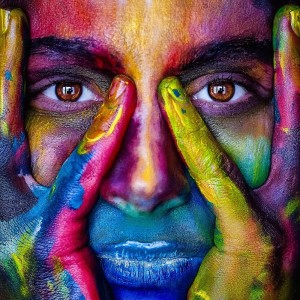In the Pink
Color therapy may help you step out of the shadows and into a healthier light.
by Susan Weiner, Energy Times
 It’s no coincidence that most fast-food restaurants are decorated with vivid reds and oranges. Market researchers know that these bright colors encourage diners to eat quickly and leave.
It’s no coincidence that most fast-food restaurants are decorated with vivid reds and oranges. Market researchers know that these bright colors encourage diners to eat quickly and leave.
Using color to influence people is not new. Thousands of years before the rise of modern marketing, Egyptians, Greeks and Chinese routinely used colors to treat various emotional and physical maladies. In India, color therapy remains an integral part of Ayurvedic medicine, which describes the body as having seven main chakras or spiritual centers. Each chakra is associated with a color; imbalances result in ailments that can be corrected using different hues.
In the US, interest in therapeutic color developed during the 19th and 20th centuries, when professionals began publishing papers on the subject. Today, color therapy—also referred
to as chromotherapy, cromatherapy or colorology—is used by trained practitioners to promote health
A testament to the influence of color may be that the mere mention of army green, robin egg blue, baby pink, tomato red and school bus yellow can elicit distinct imagery, memories and sensations. Colors have been found to enhance cognitive function and spark creativity. When 600 volunteers at the University of British Columbia performed tasks with words or images displayed against red, blue or neutral backgrounds, red was found to help people recall words and details, while blue sparked imagination and creativity (Science 2/27/09).
In public settings, color lighting can be used to manipulate behavior. In one study, researchers created lounges decorated in blue, red or yellow. While more people were drawn to the yellow and red rooms, guests lingered longer in the blue room. Red and yellow guests were more social, and although yellow guests consumed twice as much food, red guests reported feeling hungrier and thirstier than the others (Contract 12/1/07).
Color’s powerful effects come from the vibrations associated with different segments of the color spectrum. Seen naturally in rainbows or in light refracted through a prism, colors represent different wavelengths of light from red on one end through orange, yellow, green and blue to violet on the other end. Each color vibrates at a specific frequency; chromotherapists believe that the body’s tissues also vibrate at specific frequencies. They contend that color is like a vitamin: Just as a vitamin deficiency requires a nutritional boost, an increase in color can be used to treat symptoms of conditions such as depression, anxiety, panic attacks, sleep deprivation, stomach problems, addictions and allergies.
Color therapy is not currently regulated by one central credentialing agency. However, the International Association of Colour (IAC) in Cambridge, England (www.iac-colour.co.uk), a professional association for chromotherapy healers, is affiliated with various complementary health associations. “As far as I can tell, each school has its own requirements,” says Arlene Arnold, a certified color therapist in Vancouver, Washington. Her color therapy course incorporates in-person or online training, a two-day practicum, 15 documented free sessions, a final exam and three monitored sessions (www.ThePowerofColor.com). “Once I believe they really understand the program, then I’ll certify them,” she says.
Therapeutic color encompasses a number of techniques. “Some of the modalities include shining colored lights on a person, being in a room painted a particular color, wearing certain colored clothing, imaging colors shining upon you while sitting still, eating fruits and vegetables of certain colors and wearing color therapy glasses,” says Donna Reis, CNHP, Certified Chromatologist and founder of Color Vibration in Fort Worth, Texas (www.colorvibration.com).
An advisor to a school for autistic children, Reis counsels family members on the use of color. “With autism, it is very important to avoid the color orange, as it is very upsetting emotionally,” notes Reis. “Autistic individuals respond very well to the color blue, however. You can dress them in blue and paint their bedrooms blue, and blue sheets are helpful for good rest. Be sure to use a pale blue, not a deep, dark blue.” Reis suggests that caretakers of those with Alzheimer’s disease draw on the color yellow, saying, “If you paint the doors yellow, they won’t try to leave.”
There is more to the phrase “feeling blue” than meets the eye, since the color blue may exacerbate depression’s sadness. “Orange is a wonderful color to introduce; however, depression can stem from a traumatic issue, so those folks can’t handle the energy of orange,” Reis says. Instead, practitioners would diffuse medical-grade orange aromatherapy oil into the environment or apply yellow color therapy light to the lung area. “Our lungs are our grief center and yellow is the color of elimination,” Reis explains.
In addition to color healing therapies, different hues can be used architecturally in terms of “color ergonomics—the psycho-therapeutic effects of color in the environment,” says Frank Mahnke, president of the International Association of Color Consultants/Designers (www.iaccna.org). “The basic design consideration is to promote human welfare in the workplace, offices, industrial environments, educational facilities, healthcare environments, psychiatric facilities and residential design.”
When working with color, environmental designers consider four areas: psychological effects (mood reactions to different colors), neuropsychological aspects (how the brain processes and reacts to color), visual ergonomics (visual efficiency and comfort), and emotional effects (emotional reactions to color). “Therapy through color affects people every day, whether at work, regarding their health, learning or at home,” says Mahnke. “Although they are not designers, individuals can interpret for themselves the psychological affects or visual language of color and pay attention to the visual ergonomics.” On a practical level, this means taking such steps as painting your kitchen blue (or putting a blue light in your refrigerator) to curb your appetite or using orange in your home décor to lift your spirits.
Using the right colors just might make your life, well, more colorful—and contribute to your emotional and physical well-being.